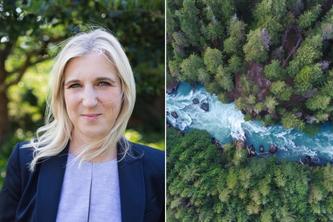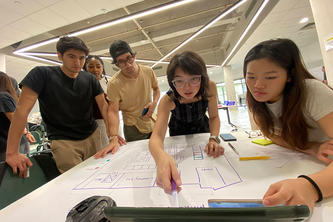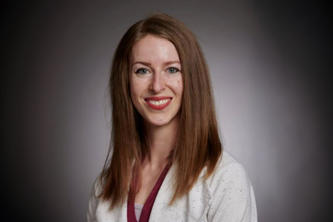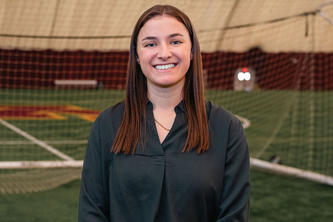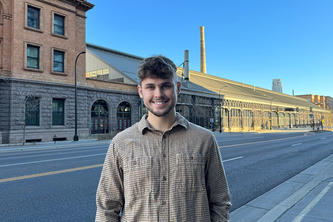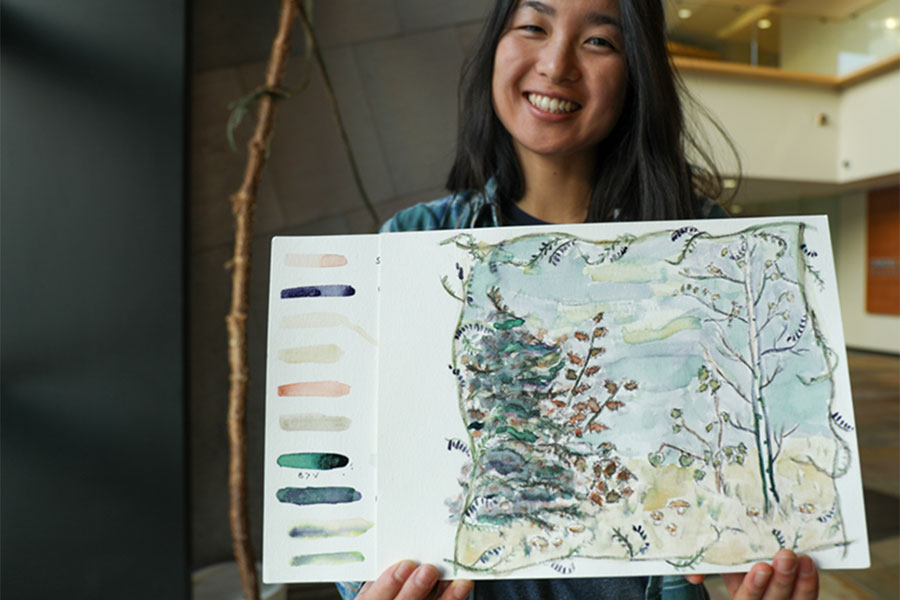
Maria Park spends her days studying tree communities. The PhD student in Ecology, Evolution and Behavior, College of Biological Sciences (CBS), is a keen observer of nature who turns those observations into insights about how trees influence one another. Her love of nature and looking closely at the world around her started early and fed a lifelong interest in both science and art. Park, who is a trained artist and serves as a teaching assistant for the University’s Art and Ecology course in addition to her work in the CBS Cavender-Bares lab, investigates how tree community composition influences the growth and stress of trees.
Can you say a bit about your area of study?
I study how plants grow and interact with each other in the context of forest communities (plant ecophysiology). I’m interested in how tree community composition affects resource availability, stress, and growth of individual trees. Essentially, I am working to understand how trees influence other trees in their neighborhood by altering the local availability of light, water, and nutrients. I hope that this work can someday help inform conservation, restoration, and sustainable use of our forest ecosystems.
When and how did you first get interested in art? What appeals to you about it?
I have been drawing ever since I could hold a pencil in my hand, and playing music since I could plunk notes on a piano. Art has always been a way for me to observe, interpret, and learn about nature. I have found art to be a language that can transcend borders, cultural differences, and political leanings. Art, in all its forms, can bring joy and pain, grief and enlightenment. Art helps people make sense of the world around us and connect with each other. Art is a practice that enables me to weave together the many facets of who I am, giving me the freedom to connect and learn from everyone around me.
How do art and science intersect for you?
As a child, I would doodle dogs, deer, flowers, cardinals, and blue jays. As a college student in biology labs, I would sketch labeled diagrams for organisms including plants, birds, and marine invertebrates. As a college student in art classes, I would both paint and carry out social experiments with the trees I was researching.
As a PhD student, I collaborate with art professor Christine Baeumler, forestry professor Rebecca Montgomery, and other members of the academic and local communities to practice socially engaged art. We aim to bring awareness of how climate change and human disturbances are changing ecosystems, and to build a collective understanding of how we can best steward our local landscapes and waterscapes.
What’s your favorite thing to draw and/or paint?
I have a watercolor journal that I bring with me when I explore new places. When I arrive at a place that calls to me, I will plop down or stand wherever is most convenient and do a quick plein air painting of my surroundings. The paintings capture what I find to be interesting—my observations and interpretations of a place. They are my way of documenting life experiences and fleeting moments as a visual memory.
- Categories:
- Science and Technology
- Art
